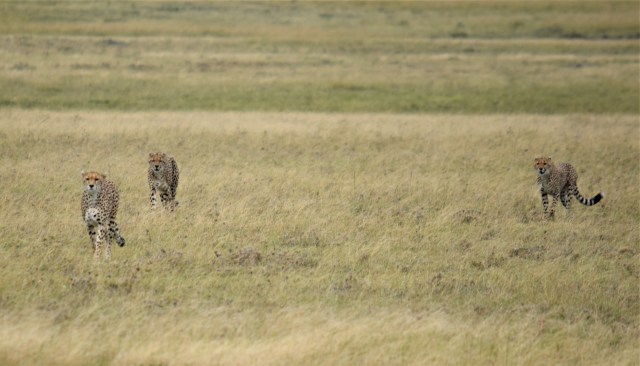Needless to say, there are many different places to stay when going on a safari and those places are dependent on your guides and the price that you are willing to pay. We did what is considered a mid-tier safari, which is different than what you would expect from a luxury safari, but we found it to be more than adequate. The places that we stayed at varied as we traversed the migration path through the various national parks and reserves in Kenya and Tanzania. Some were in the parks themselves, some were just outside the parks, they included tents, lodges, and bungalows. They all had restaurants and a bar that served refreshments, but again the styles varied greatly.







Our trip started with a two night stay at the Zebra Plains Amboseli Camp. As with many of the places where we stayed, you weren’t allowed to be out at dark without having one of the guards at the camp escorting you. We certainly understood why after our first night at the camp as we heard a hyena on our front porch and heard elephants and other animals as they made their way through the camp to the watering hole that was located next to the camp. Although the camp is technically located outside of the Amboseli National Park, there are no fences and the wildlife can be found outside of the park as much as inside. It certainly made for an excellent start to our safari adventure.








From Amboseli National Park, we headed to Lake Manyara and Ngorongoro Crater. Although both locations are accessible from the same small town, we stayed at two different locations for the two nights that we spent there. The first was at the Pamoja Africa Lodge, which was definitely a change of pace from the tent at Amboseli. Because we were in a town, there wasn’t any wildlife at the lodges and the accommodations were closer to a hotel than some of the other places where we stayed. The second night we stayed at the Bougainvillea Lodge where we had more of a bungalow and even had a fireplace in our room that the staff lit for us. It was a level of comfort that we wouldn’t get again for a few days.







Our next stop was to the heart of the Serengeti National Park where we would stay two nights at the Thorn Tree Camp. Located in the center of the park, this camp would definitely be more rustic than the previous two lodges. It didn’t mean that they didn’t try there best to make us comfortable and the staff were extremely nice. They set chairs up for us around the firepit where we could sit and watch the amazing sunsets. We saw several different animals wandering through the camp and could see herds of zebras and wildebeest from our tent. Being as secluded as we were, we were able to enjoy looking up at the night sky with all of the brilliant stars. We really felt like we were on safari while we stayed at Thorn Tree Camp.






After leaving the Serengeti National Park, we headed north to the Maasai Mara where we would spend two nights at Zebra Plains Mara Camp, which is a sister property to the Zebra Plains Amboseli Camp. After the couple of days in the tents in the Serengeti, it was quite refreshing to stay at the camp in Maasai Mara. Not only was the staff extremely friendly, the Maasai warriors even gave us a demonstration of their traditional warrior dances and songs. We were still surrounded by wildlife and we had a water buffalo who decided to feed outside of our tent and just after we went to bed on the first night,and a leopard decided to wander through the restaurant. Although we weren’t required to have an escort after dark, there were warriors posted all around the camp to ensure that everyone was safe.








On our last two nights, we were treated to a couple of locations that were more upscale than staying at the camps in the parks. First we stayed at the Lake Naivasha Country Club where we relaxed and simply enjoyed the beautiful scenery. There were views of the lake and antelopes and zebras wandered the grounds. There was a large buffet for both dinner and breakfast where you could find a wide variety of offerings. Our last night was spent at the Lake Nakuru Lodge, which was truly a wonderful way to end our safari. Not only does the lodge have everything that you could want, including a pool, but the staff was extremely friendly and helpful. The views of the lake from our room and the wildlife wandering all around us made it one of our favorite places that we stayed at during the ten night safari trip.
































